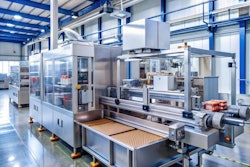Editor’s note: The following is an excerpt from Packaging Design: Successful Product Branding from Concept to Shelf (Krasovec/Klimchuk, Wiley, 2nd edition, 2013).
A critical component in the design process, research provides an understanding of consumer insights, synthesizes conceptual development, and uncovers findings that aid in the refinement of the final design solution. Research can also impede creativity when not used appropriately, when results are used too literally, or when statistics or scorecards alone drive the design decision-making process.
Conducting deep and specific design research on each phase of the design process focuses a design strategy. Such research may include gathering insights from consumers, understanding the background and history of the product or brand, exploring the retail environment, uncovering materials and structural opportunities, and learning more about the brand from the client. As design strategies evolve, it is useful to conduct more specific design research to identify opportunities for enhancing the design. Collecting visual swipes—magazine or newspaper clippings, screen captures from Internet sites, color swatches, textures, patterns, type treatments, images, inspirational ephemera, and reference materials—helps to visually formulate, construct, and support a design strategy.
Do not look to existing packaging designs for ideas: it is too easy to be overly influenced and either mimic or plagiarize. Finding a unique strategy, design style, or marketing direction can be challenging when an idea is influenced by another designer’s effectively developed solution. Instead, look to other sources of design inspiration: architecture, sculpture, fine art, graphic design, jewelry design, industrial design, or fashion design, or to history for past design styles that can inspire new ideas. Identifying broad, common design styles can build a sturdy platform from which to develop a design strategy.
Researching typographic styles, brand identities, color palettes, graphic imagery, materials, textures, structures, and production techniques is part of the design process. Research is not simply typing out a word in multiple font styles: outstanding examples of typography sources from digital and print resources can be inspirational.
Effective design strategies are created from extensive research. Inexperienced designers often perceive broad design research as time consuming and cut corners to move through it quickly. The design process is weakened when not enough time is devoted to research and sourcing inspiring ideas that will help create strong and motivating design strategies.
Marianne Rosner Klimchuk ([email protected]) is Associate Chairperson, Associate Professor, Packaging Design Dept., Fashion Institute of Technology.


























